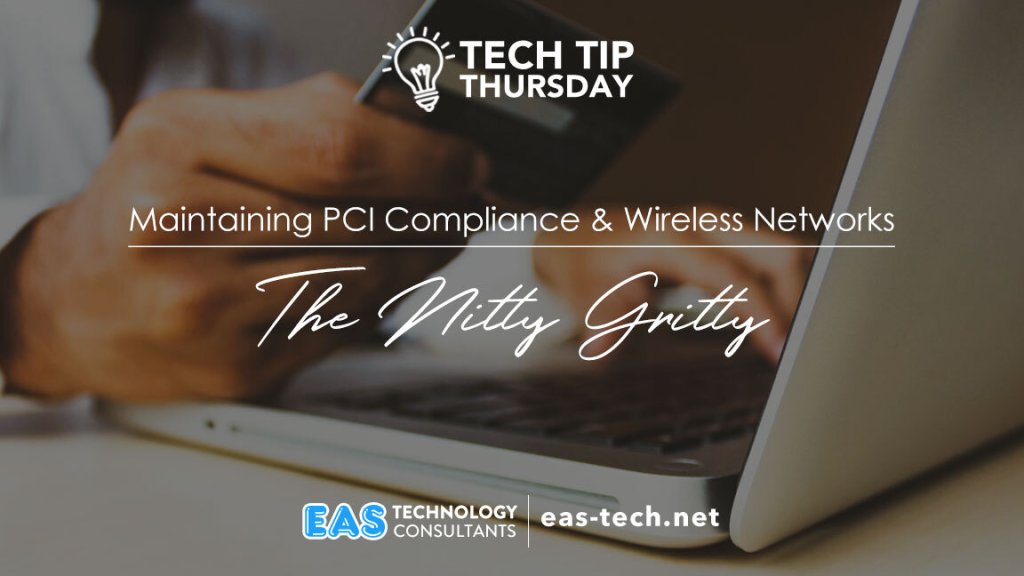
Ensuring Payment Card Industry Data Security Standard (PCI DSS) compliance is essential for businesses that collect payments via wireless networks. Wireless networks introduce additional security risks due to their inherent vulnerabilities, such as unauthorized access, data interception, and network breaches. To protect sensitive cardholder data and maintain PCI compliance, businesses must implement several key measures.
- Use a Secure Wireless Network: Businesses should employ robust wireless encryption protocols, such as WPA2-PSK or WPA3, to secure their wireless networks. Strong encryption ensures that data transmitted between the payment devices and the network remains confidential and protected from unauthorized access.
- Separate Payment Network from Other Networks: Isolating the payment network from other networks, such as guest or employee networks, reduces the attack surface and minimizes the risk of unauthorized access. By segmenting the networks, businesses can restrict access to sensitive payment data and implement stricter security measures specific to the payment environment.
- Implement Firewall Protection: Deploying firewalls helps safeguard the wireless network by monitoring and controlling network traffic. By setting up rules and policies, businesses can allow only necessary connections and block any unauthorized access attempts, preventing potential breaches and unauthorized data access.
- Regularly Update Network Equipment: Keeping wireless access points, routers, and other network equipment up to date with the latest firmware and security patches is crucial for maintaining a secure environment. Manufacturers often release updates to address vulnerabilities and enhance the overall security of their devices. Regular updates help ensure that known security flaws are patched and minimize the risk of exploitation.
- Strong Authentication and Access Controls: Businesses must enforce strong authentication mechanisms for accessing the wireless network and payment systems. This includes implementing unique, complex passwords, two-factor authentication, or even more advanced authentication methods such as biometrics. Additionally, limiting administrative privileges to only authorized personnel helps prevent unauthorized changes to network configurations and reduces the risk of insider threats.
- Regular Security Audits and Testing: Conducting periodic security audits and vulnerability assessments allows businesses to identify potential weaknesses in their wireless network infrastructure. Regular penetration testing helps discover vulnerabilities that could be exploited by attackers and provides valuable insights into the effectiveness of existing security measures. By addressing these vulnerabilities promptly, businesses can stay ahead of potential threats and maintain PCI compliance.
- Protect Cardholder Data: Employing strong encryption protocols, such as Transport Layer Security (TLS) or Secure Sockets Layer (SSL), when transmitting cardholder data over wireless networks is crucial. Encryption ensures that sensitive information remains secure and unreadable if intercepted during transmission. It is important to use up-to-date encryption algorithms and maintain compliance with PCI DSS requirements regarding the protection of cardholder data.
- Employee Awareness and Training: Educating employees about the importance of PCI compliance and wireless network security is vital. Regular training sessions can help employees understand their roles and responsibilities in maintaining a secure environment. This includes recognizing and reporting suspicious activities, understanding secure practices for handling payment data, and adhering to established security policies and procedures.
- Maintain Audit Trails and Logs: Businesses should implement logging and monitoring mechanisms to track and record wireless network activities. Audit trails provide valuable evidence in the event of a security incident or breach, aiding in the investigation and recovery process. Additionally, monitoring network logs helps detect any anomalies or suspicious behavior, allowing for timely response and mitigation.
- Engage with PCI Compliance Experts: For businesses that lack in-house expertise, engaging with qualified PCI compliance experts can be highly beneficial. These professionals can assist in conducting assessments, implementing security measures, and ensuring ongoing compliance with the PCI DSS requirements.
By implementing these measures, businesses can significantly enhance the security of their wireless networks and ensure PCI compliance when collecting payments. Safeguarding cardholder data not only protects customers’ sensitive information but also helps maintain the trust and reputation of the business in the ever-evolving landscape of cybersecurity
